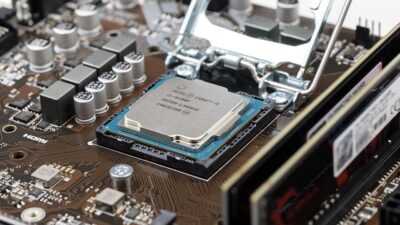As artificial intelligence (AI) evolves and permeates various sectors—from healthcare to autonomous vehicles—there’s a growing need for robust, high-performance computing solutions. Advanced Micro Devices (AMD) has emerged as a key player in this landscape, providing chipsets that are specifically designed to enhance AI capabilities. With innovations in architecture, processing power, and energy efficiency, AMD is paving the way for a new generation of AI technologies.
The AMD Advantage: Architecture and Design
At the heart of AMD’s strategy lies its innovative chip architecture. AMD has embraced a modular design approach with its Zen architecture, which has significantly improved performance and efficiency across its CPU and GPU offerings. The latest iterations, such as the Ryzen and EPYC series for CPUs and the Radeon line for GPUs, are tailored to handle the complex computations required in AI tasks.
Heterogeneous Computing
One of the standout features of AMD’s chipsets is their ability to support heterogeneous computing. This allows for simultaneous processing on CPUs and GPUs, enhancing the speed and efficiency of AI tasks. By leveraging both processing units for different types of workloads—CPUs for general processing and GPUs for parallel data handling—AMD provides the flexibility and power needed for modern AI applications.
AI-Specific Operations
In addition to general computing capabilities, AMD has integrated AI-specific features into its chipsets. For example, the recent chips include specialized units that can efficiently handle matrix operations, which are foundational for machine learning algorithms. These enhancements improve the performance of deep learning training and inference tasks, making AMD chipsets particularly appealing for AI researchers and developers.
Energy Efficiency and Scalability
As AI workloads often require enormous computational resources, energy efficiency becomes a critical consideration. AMD has made significant strides in power management with its latest chipsets, allowing data centers and enterprises to reduce energy costs while maintaining high performance.
EPYC Processors for Data Centers
AMD’s EPYC processors have been designed specifically for data center applications. With their high core counts and advanced fabrication processes, these chips can manage large-scale AI workloads with lower energy consumption compared to traditional architectures. This aspect is especially vital for businesses looking to implement AI solutions at scale while keeping an eye on operational costs.
Real-World Applications
The impact of AMD’s chipsets on the AI landscape is visible across various industries:
Healthcare
In healthcare, AMD’s technology enables faster data analysis for diagnostics and treatment recommendations. Machine learning algorithms that help predict patient outcomes or identify diseases can run much more efficiently thanks to the processing capabilities of AMD chipsets.
Autonomous Vehicles
The automotive industry is also benefiting from AMD’s advancements. AI plays a crucial role in the development of self-driving cars, where real-time data processing and decision-making are essential. AMD’s powerful GPUs can handle the vast amounts of data collected from sensors, making them an excellent fit for this market.
Gaming and Entertainment
AMD’s influence extends to gaming and entertainment, where AI is improving user experiences through advanced graphics, predictive algorithms, and personalized content recommendations. The integration of AI within gaming engines relies heavily on the processing power of AMD’s GPUs, bridging the gap between high-performance gaming and cutting-edge AI.
Future Prospects
As AI technology continues to advance, AMD is poised to further enhance its chipsets to meet evolving demands. The company is actively investing in research and development, exploring new architectures and technologies such as machine learning accelerators and quantum computing interfaces.
Collaborative Ecosystem
AMD has also fostered a collaborative ecosystem through partnerships with software developers and academic institutions. By supporting open-source initiatives and providing developers with robust tools and frameworks, AMD ensures that its chipsets can be utilized effectively for a variety of AI applications.
Conclusion
AMD’s chipsets are shaping the future of artificial intelligence by providing the necessary power, efficiency, and versatility to handle complex AI workloads. As industries increasingly rely on AI to drive innovation, AMD’s continuous advancements in chip technology will be crucial in unlocking new possibilities. With its commitment to performance and energy efficiency, AMD is not just powering the next generation of AI—it’s setting the stage for a smarter, more interconnected world.

